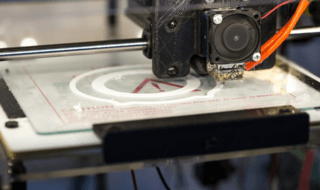Contents
Did you know, you can add Run Commands in Windows PC?
It wouldn’t be surprising because Microsoft invented it to launch an internal component control panel, so you can make changes to it at your fingertips. Of course, many PC administrators have given up on it but when it comes to performing advanced tasks in the machine, everyone uses it including us. It might have clicked in your mind that why you can’t create custom Run Commands to launch programs, documents, games, and more with one-click.
What is Run Command?
If you have recently switched from MacBook or iMac or Linux-based machine, then you would not know about Run Command. The function is an exclusive feature for Windows only and it is not available on other operating systems. Microsoft implemented the feature way back in Windows XP or perhaps even an earlier version. One thing has not changed over the years and it is the launch (Ctrl + R) shortcut and it works flawlessly on Windows 10.
https://www.youtube.com/watch?v=zF56dEmrDHI
Currently, there is no official method to make any process work in Run Command because it is meant for Windows internal processes. In short, there is no official method available at this moment, but you can modify a couple of things to make it work, and it’s easy to implement. None of your Windows system files will be harmed, so don’t worry about permanent damage to the operating system.
1. Shortcut
Microsoft added a shortcut feature for users, who could not add a shortcut to a newly-installed program. Anyone can do it without technical knowledge can do it, and that’s one of the contributing, why we have listed it on the top.
Step 1: Right-mouse click to select “New” and then click on “Shortcut” to continue.

Step 2: Now, click on “Browse” and it will open the File Explorer browser.

Step 3: Now, you have to find the application manually from the File Explorer browser.

In our case, we have selected the “Audacity” installed program from the machine, and you can look at the location. The file should be executable and it won’t work on non-executable programs, so don’t bother trying to add folder or random files.
Step 4: Name the shortcut and that’s what “Run Command” becomes. Do not celebrate yet because there’s more work to do right now.

Step 5: Select the new shortcut, then right-mouse click for more options, and then “Cut” the shortcut.

Step 6: Now, go to (C:\Windows) and then paste the shortcut in the folder.

That’s it, now test the newly created run command in your Windows machine. If you are using Windows 7 and 8.1 Pro machines, then this method will work on it as well.
- Press Windows Key + R and type “auda” in the “Run Command” to launch it.

- Audacity launched instantly, and it was indeed quick.

Overall, it works in Windows 10 latest 2004 build and we did not face any errors.
2. AddToRun
Something did not work in the first method? Let’s move to a simpler solution but we have to use a third-party tool called “AddToRun” in the process. The Windows program is an open-source solution that is designed to work with the operating system.
Step 1: Download AddToRun & extract the folder in your machine.
Step 2: The program is portable, so there’s no need to install it and run it directly.

Step 3: Click on “Select” to add a program to the list.

Step 4: We have selected “Audacity” from the installed program list, and that’s what you have to do. Users have to add an executable file, and you can try others as well, but it may not work properly.

Step 5: Now, give the Run Command a name and we have given “Auda” for the process.

Step 6: Click on “Add” and it will be saved automatically.

We have tested the Run Command function and it works flawlessly.

Most of the open-source is safe to use, but we wanted to assure you that it is safe for you. Virus Total is a popular online security solution, and it did not detect any threat from the program, which is as expected.
3. Editing the Registry
The registry is a powerful function in Windows operating system and we can make good use of the function.
Step 1: Press Windows Key + S to open the search bar, and then type “Regedit” to continue.

Step 2: Regedit window shows up on the screen and go to location “HKEY_LOCAL_MACHINE > SOFTWARE > Microsoft > Windows > CurrentVersion > App Paths” to continue.

Step 3: Open “App Paths” and then right-mouse click to view more options. Now, click on “New” and then “Key” to continue.

Step 4: Now, give the new folder a name, and that should be the Run Command name. For example, we have selected “Audacity” and we are naming the new folder “Audacity” to open.

Step 5: Find the location of the installed program and copy the location.

Step 6: Click to select “(Default)” and then mouse-right click for more options, and then click on ”Modify” to continue.

Step 7: Now, paste the copied location for the Run Command to open and then click on “OK” to finish it.

Now, open Run Command and then launch the executable file using the folder name “Audacity” that we have created for the tutorial. You can undo it by deleting the key and follow the same tutorial to find the location.
Bottom Line
Run Command exists in the Windows operating system for almost two decades now, and we have found many ways to use it. Now, you can create your own Run Commands for the process, and it will make your lives easier. Let us know which method worked in your Windows PC in the comment section below.



